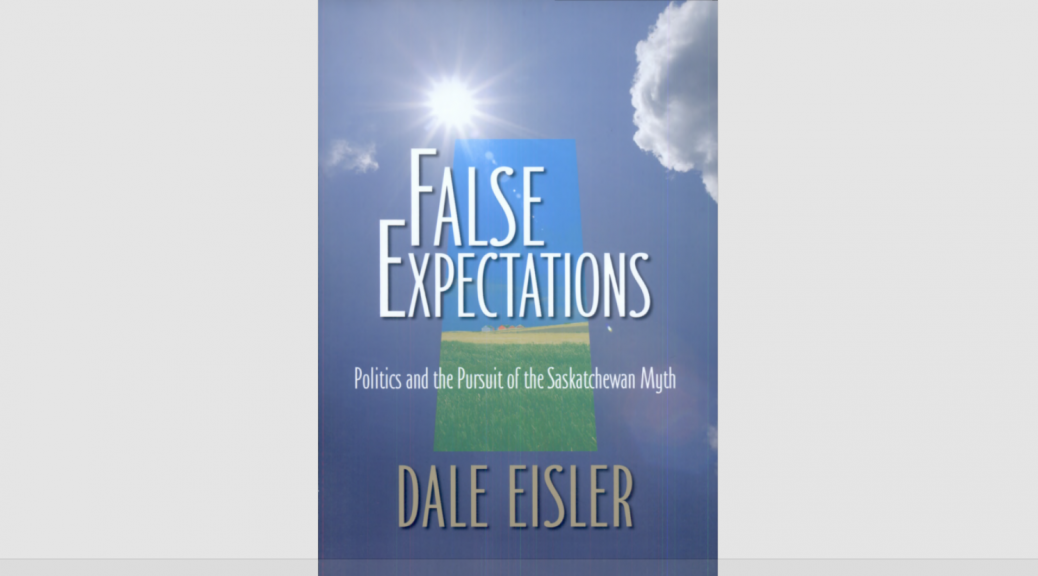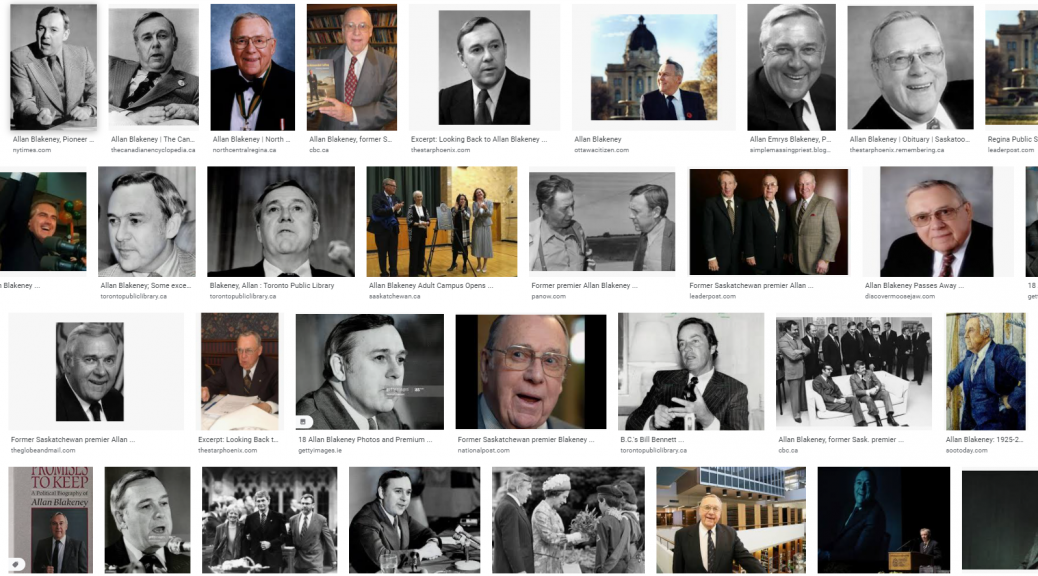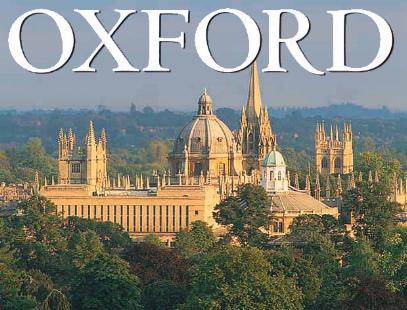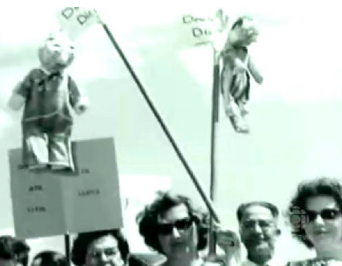Tag Archives: Tommy Douglas
A Brief Synopsis of False Expectations by Dale Eisler (2006) University of Regina Press

Introduction & Chapter 1: The Saskatchewan Myth
Dale Eisler discusses private and public choice in political economy and aims to demonstrate that Saskatchewan’s self-image diverges from other provinces perception of the province. First, Saskatchewan was created for the consumption of the Commonwealth. Second, Saskatchewan’s self-image struggles with the duality of external and internal images as reality never meets expectations in politics or economy. The Saskatchewan Myth is a politically re-enforced faith that is embedded in the identity of the polity; it the dreamy aspirations for future prosperity and a psychic strength that continues to bring hope as rural fortunes prove dubious. The myth calls for overly optimistic economic forecasts, willful exaggeration and unrealistic ignorance of geographic and revenue realities. For immigrants, it represented hopes and dreams in the New World and built-up a romance of Saskatchewan as a special place with special people. The myth is real in the minds of the citizens where we believe the bonds of community are stronger than anyother polity in Confederation. Are Saskatchewan citizens narrow-minded and too preoccupied with getting through the day to realize the false visions of grandure at the root of our provincial identity? Why is Saskatchewan literature focused on the “imagined communities’? Why is the province the second largest exporter of human resource in Canada? The truth is that Saskatchewan was the promise-land that never was realized. Historically, the province played a significant role in the economic non-partisan project under Laurier. The myth was manufactured before conception in Britain to expand the Canadian West. There was fear of American expansionism and in response to the Crow Law (1846) Canada was left with the drive for national policy. During the National Policy era and beyond, wheat was an undisputed lynchpin to the Canadian economy. However, we are under valued in confederacy then and currently. Eisler will show through political history and economic study that the 2nd century was less promising then the first…
DISCLAIMER: Professor Nerdster is intellectually free and as such, does not need to agree with Dale Eisler’s views to explore them. It is better to get these views out in the open and understand them, rather than not address the ideas of this influential scholar.

![]() Chapter 2: The National Policy
Chapter 2: The National Policy
DISCLAIMER: Professor Nerdster is intellectually free and as such, does not need to agree with Dale Eisler’s views to explore them. It is better to get these views out in the open and understand them, rather than not address the ideas of this influential scholar.
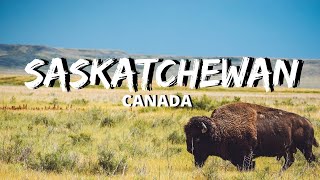
Chapter 3: Misguided Economy
Saskatchewan became a great success and was crucial for a viable and secure national economy. The West would help create the wealth in Central Canada. Money was essentially funneled to Central Canada as a direct consequence of economic policy. Critical for Canada’s economic dimensions is the export of a major staple to sell on the world market, and a rapidly growing farm population – needing all the necessities of life. Central Canadian Tariffs were to decline over time, as promised by Laurier but this did not take place as Canada could not compete against the United States economic growth. Farmers were paying 30% more for Central Canadian tractors with the tariffs than they would be for tractors from Minnesota. This ‘Branch-Plant’ economy harmed farmers and economic growth in Saskatchewan. The economic environment was designed specifically against Western parochial interests. There was a false sense of security in the National Policy and tariffs for industry, railway development in Western settlement did not serve Saskatchewan well. Despite this, the myth becomes a reality, in which there is still hope for better days ahead.
DISCLAIMER: Professor Nerdster is intellectually free and as such, does not need to agree with Dale Eisler’s views to explore them. It is better to get these views out in the open and understand them, rather than not address the ideas of this influential scholar.

Chapter 4: The Illusions of Growth
In the span of only 20 years, Saskatchewan grew to be the third most populous region in Canada. While there was ethnic tensions between aboriginal people and settlers, the wheat production was poised to place Saskatchewan on the threshold of economic greatness in Canada. Haultain called for provincial status in the west in 1904 and called an election to strengthen his mandate for self-determination in the west. Laurier gave in 1905 with the caveat that the west be split up to form competitive cultures. In 1930 our national resources were released to the province under Section 93. There was a problem in Saskatchewan of backward children in rural schools who were uneducated by unqualified teachers. The cost of rural Saskatchewan also hindered grown exponentially.
DISCLAIMER: Professor Nerdster is intellectually free and as such, does not need to agree with Dale Eisler’s views to explore them. It is better to get these views out in the open and understand them, rather than not address the ideas of this influential scholar.
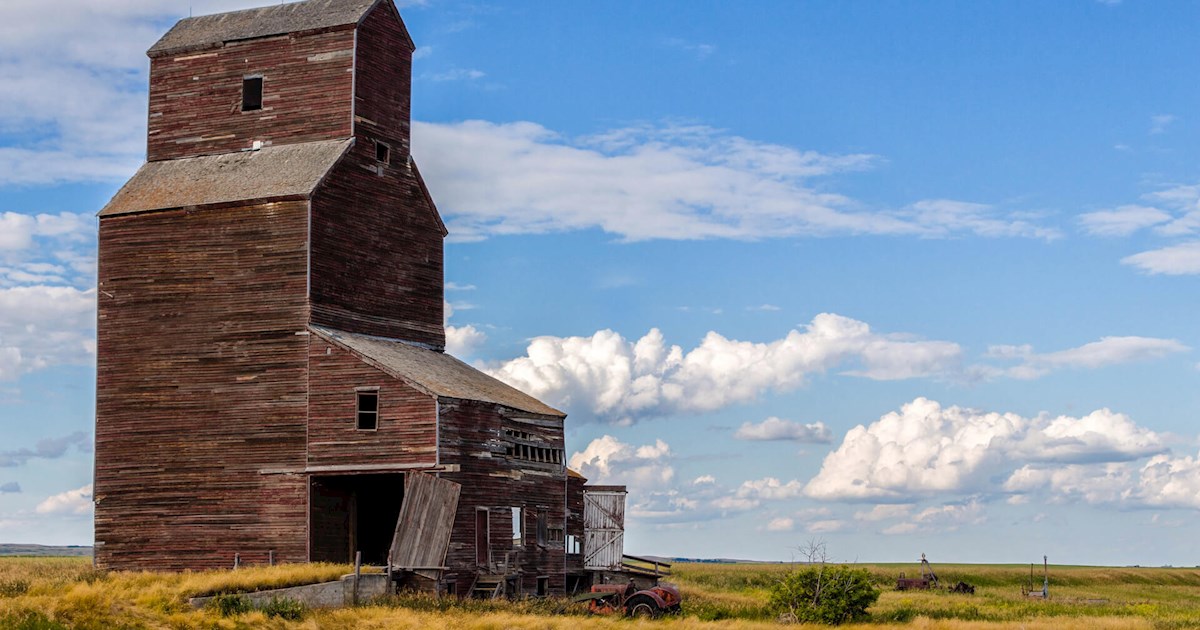
Chapter 5: Reality and Politics
At the zenith of Saskatchewan prowess, 57% of homesteads failed. There was great conviction from people who did not control their economic destiny. They were not fatalistic but imaginative. When prices drop due to agricultural laws of economics, farmers instinctively produce more wheat. The province’s economy was embedded in wheat. Manitoba Grain Act of 1900 held the CPR accountable for gouging farmers and the Saskatchewan Grain Growers’ Association (SGGA) represented farmers in an non-partisan fashion. The SGGA did have influence on the Saskatchewan Liberal Party. The fall of wheat prices in 1921 cultivated more Farmer Unions and a communitarian spirit in Saskatchewan. The Liberal Premier Martin began to distance himself from the Liberal Party of Canada. July 1, 1927, marked the 60th anniversary of Confederation, while the theme was ‘unity in diversity,” the Ku Klux Klan had their ‘konclave’ in Moose Jaw, the largest in Canadian history. Meanwhile the economic decline in relative terms to the rest of Canada was underway as Ontario, Quebec and BC surpassed the growth of the wheat economy.
DISCLAIMER: Professor Nerdster is intellectually free and as such, does not need to agree with Dale Eisler’s views to explore them. It is better to get these views out in the open and understand them, rather than not address the ideas of this influential scholar.

Chapter 6: The Changing Myth
The people were never able to let go of that hope. There was a shift in myth towards institutional reform and economic control. Depression folklore, being bound to the Wheat. The Great Depression’s economic impact was devasting. Saskatchewan Loans Act; borrowing by cabinet in the depression was high. During the Great Depression farming doesn’t provide economic growth while the high cost of rural farms was the economic backbone. What is there to do about the wheat economy?
DISCLAIMER: Professor Nerdster is intellectually free and as such, does not need to agree with Dale Eisler’s views to explore them. It is better to get these views out in the open and understand them, rather than not address the ideas of this influential scholar.

Chapter 7: Keeping Hope Alive
The founding myth of Saskatchewan forged by the National Policy’s mixture of politics, economic nationalism and the private commercial aspirations of a central Canadian business class had dissolved in the pain of the Great Depression. There was a call to taking control of their destiny as it was denied by outward forces. Radical socialism begins to take root as capitalism is to blame. The Regina Manifesto in 1933 calls for a major economic reassessment. The Progressive grow in 1921 thanks to anti-tarriff and anti-exploitation sentiment. The Co-operative Commonwealth Federation (CCF) abhorred the class community and external exploitation in Saskatchewan. The CCF was a complex group of leftist academics and labour union representatives. There was substantial fear of Jimmy Gardiner and the Liberal Party. It is evident that Tommy Douglas re-invigorated the myth as a CCF moderate.
DISCLAIMER: Professor Nerdster is intellectually free and as such, does not need to agree with Dale Eisler’s views to explore them. It is better to get these views out in the open and understand them, rather than not address the ideas of this influential scholar.

Chapter 8: Suffering and Redemption
King deceived Saskatchewan farmers by breaking the conscription clause against sending their sons to war. Economic spiral continues during the Dirty Thirties, as poverty is visible to the wider community. Tommy Douglas envisions a new expansive state and road to the promise land. He advocated the Social Gospel: utilizing institutions of the state to accomplish Christian deeds of mercy and charity. Keynesism arrives and State planning expands during the Second World War across Canada, particularly in Saskatchewan.
DISCLAIMER: Professor Nerdster is intellectually free and as such, does not need to agree with Dale Eisler’s views to explore them. It is better to get these views out in the open and understand them, rather than not address the ideas of this influential scholar.
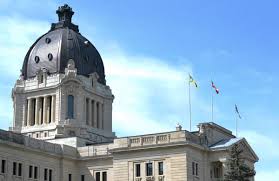
Chapter 9: The New Saskatchewan Myth
CCF would push politics over reality by offering simplistic solutions to complex problems of state. Douglas used politics to raise the ethic of a higher moral level, one that spoke to the Christian morality that links the welfare of people to each other. Saskatchewan became a provincial laboratory of national worth. Saskatchewan finds potash and oil reserves and socialist come from all over the world to take part in the first Socialist government in North America. The bureaucrats struggled with the widely dispersed demographic reality of the province. The idea that government, through economic planning and social ownership, could unlock the potential of Saskatchewan that had been denied to its people, was central to CCF philosophy and the early days of the Douglas government. Upon gaining power, Douglas was asked to pay a cash payment of 16 million from the Federal Liberals over the seed debt and additionals. Farmers security legislation was presented by Fines in 1945. Joe Phelps got the government involved in a box factory, a brick factory which were economically unsustainable. Douglas called Sigerist to study health-care in Saskatchewan. The British Socialist George Cadbury helped ensure accountability and counter-racted ill-fated shoe factories and other naïve boondoggles that didn’t take into account the tarrif. Cadbury also helped with a new bureaucratic process and innovation. There arose a new managerial class. Whether the social ownership and central planning by government was successful in Saskatchewan goes to the heart of the province’s continuing political debate.
DISCLAIMER: Professor Nerdster is intellectually free and as such, does not need to agree with Dale Eisler’s views to explore them. It is better to get these views out in the open and understand them, rather than not address the ideas of this influential scholar.

Chapter 10: The Bittersweet Years
The province must accept the limited economic propperity as the CCF become more urban based in 1948. Of all of Douglas’ accomplishments, he told Romanow privately that electrification was it (1954). In 1950s and 60s agricultural dependence decreases. Governments always predict strong population growth in Saskatchewan. Douglas believed in individual rights for aboriginals and equality through integration to help the Aboriginal underclass.
DISCLAIMER: Professor Nerdster is intellectually free and as such, does not need to agree with Dale Eisler’s views to explore them. It is better to get these views out in the open and understand them, rather than not address the ideas of this influential scholar.
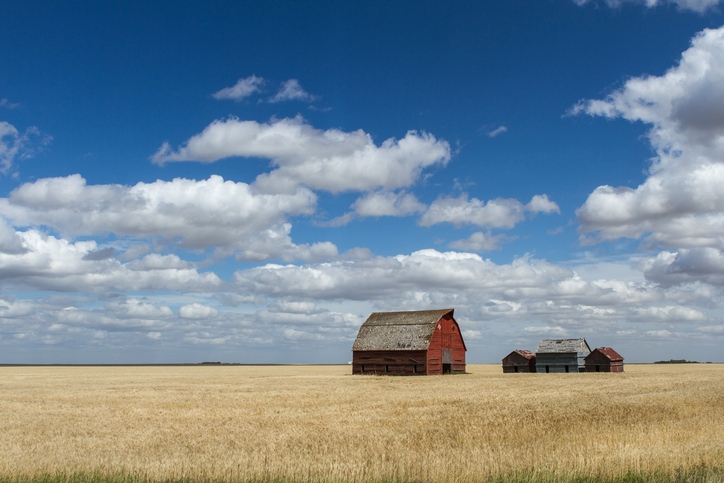
Chapter 11: The Myth and Medicare
The medicare myth brought to bare the question of how could they financially sustain it? The idea of medicare came from Mat Anderson the mayor of Lloydminster in 1915 orignally. The consequence of medicare was Keep Our Doctors (KOD) movement and the doctor strike of 1962 which was finally resolved and universal healthcare was realized. The Liberals conceded ground on prepaid medical care.
DISCLAIMER: Professor Nerdster is intellectually free and as such, does not need to agree with Dale Eisler’s views to explore them. It is better to get these views out in the open and understand them, rather than not address the ideas of this influential scholar.

Chapter 12: The Potash Myth
Ross Thatcher was first to recognize Aboriginal rights in 1960s. Thatcher and Douglas dueled over the impediments of public versus private ownership. What is clear, however, is that neither ideology can produce exceptional results. Thatcher recast the political debate in the manner of economic development in 1964 and gained power. Thatcher promoted the adoption of aboriginals into non-aboriginal homes. The promise of wealth through pot ash was not fully realized and the myth continues.
DISCLAIMER: Professor Nerdster is intellectually free and as such, does not need to agree with Dale Eisler’s views to explore them. It is better to get these views out in the open and understand them, rather than not address the ideas of this influential scholar.

Chapter 13: Big Ideas, Big Government, Big Debt
The remarkable devotion to government intervention as a solution to virtually all the perceived problems and challenges facing Saskatchewan was beginning to seem remarkable. The New Deal for People wins the 1971 election and Blakeney takes the reigns of provincial office. Thatcher’s legacy was that of unfulfilled promises and established the continued theme that Saskatchewan was failing to meet its economic potential. Blakeney continues the NDP tradition of expanding state intervention and finalizes the Crown family at 27 corporations. Grant Devine’s ‘open government’ solutions proved ineffectual as inflation expanded and international prices dropped for staple goods. The provinces population remained at around 990,000 for over 75 years from 1930-2005.
DISCLAIMER: Professor Nerdster is intellectually free and as such, does not need to agree with Dale Eisler’s views to explore them. It is better to get these views out in the open and understand them, rather than not address the ideas of this influential scholar.

Chapter 14: The Reckoning
Eisler concludes by outlining the two most pressing issues in Saskatchewan. First, the sustainability of rural society and second, the aboriginal question. Romanow was forced to take a measures of fiscal austerity to prevent the province from going bankrupt. How can rural Saskatchewan thrive in the 21st century? There is unspoken racism in Saskatchewan but who is to blame? Aboriginal education is appalling and they have a low employment rates coupled with high birth rates. We could call this phenomenon: the Edubirth crisis. Kinda like Stagflation? Silly, I know. Eisler gives the statistics on the aboriginal file and suggests more autonomy on tax policy. Richards argues for federal transfers for on & off reserves.
DISCLAIMER: Professor Nerdster is intellectually free and as such, does not need to agree with Dale Eisler’s views to explore them. It is better to get these views out in the open and understand them, rather than not address the ideas of this influential scholar.

Chapter 15 Conclusion
Get external voices to believe the myth to give a happy ending. Perhaps we can shape the myth? If we pursue the myth then perhaps that is good enough. We can accept who we are in Saskatchewan and by chasing after our ambitions for Saskatchewan somehow make perception a reality. We need to reach a national audience to attract new people to Saskatchewan. How do the aboriginals fit into the Myth? How do we cultivate the aboriginal myth? We need strong community commitment to an aboriginal solution. In the end, the Myth is somehow a force to be reckoned with. Has the myth been positive or negative? Who knows. Eisler says “let’s end the book gently, eh?”, why can’t we be satisfied with reality and accept that growth is not achievable? The Myth by definition is a force for progress and espouses believing in and working towards a goal which is what all communities need to animate the public discourse they share. The final analysis is a vaguely convoluted one, indeed.
DISCLAIMER: Professor Nerdster is intellectually free and as such, does not need to agree with Dale Eisler’s views to explore them. It is better to get these views out in the open and understand them, rather than not address the ideas of this influential scholar.
Allan Blakeney: Promises to Keep

Promises to Keep: A Political Biography of Allan Blakeney

INTRODUCTION:
Blakeney had the rank ordered license plates of Thatcher’s Liberal Cabinet removed in 1971 because he loved and respected the egalitarian streak of the Saskatchewan people. He believed that politics was an honourable profession. Blakeney was never considered good at the 30 second clip. He operated like a professor. He loved to talk about ideas. Blakeney played poker with the same group of 20 friends for 30 years. His poker face was as exceptional as his powers of recall. Blakeney gained a national reputation as a pan-Canadian statesman; concerned for Quebec and demanding the West and East get a new deal. He led Saskatchewan from 1971-1983.
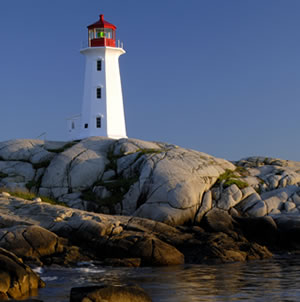
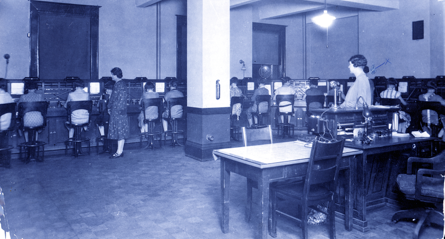
The Civil Service
Politics in Saskatchewan in the 1950s
The CCF was beginning to look for younger leaders in the mid-1950s. Blakeney was encouraged by Tommy Douglas to run for public office. In the coming election, the CCF slogan was “Tested and trusted”. The 1960 election was going to be about healthcare coverage. Thatcher had become pathological in his determination to wipe out socialism in Saskatchewan in 1955. Blakeney was only 35 when he became the Minister of Education. Blakeney setup a university in Regina and a 900-hectare Wascana park. Anne Blakeney was “down to earth” which in Saskatchewan a compliment is always. The 1960s say Douglas move in support of the amalgamation of the CCF and the labour unions federally. This marked a shift from farmers and Social Gospel, to a largely urban-based labour party. Blakeney was comfortable with the NDP which was a “right wing socialist party”. Lloyd swore Blakeney in third in the cabinet which contravened seniority. Blakeney became the Treasurer.
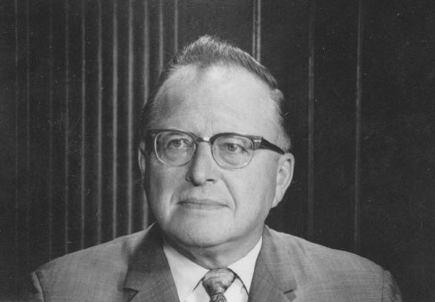
Medicare in Saskatchewan
The Saskatchewan Medical Care Insurance Act in 1961 was not reviewed by physicians and surgeons, as Douglas had promised. Lloyd became the founding father of Medicare in Saskatchewan. Blakeney was on the inner cabinet committee to deal with the issue of negotiating with doctors. BUT doctors refused to appoint members to the commission. These doctors attempted to warn individual doctors against accepting appointments in 1962. Dr. Orville Hjertaas was the only practicing physician who was willing to break the ranks in Prince Albert. There were publicity blitzes, petitions and demonstrations. Blakeney planned to counter-act those attacks. The government would be the agent for the patient in dealing with doctors. The Keep Our Doctors was working, many cabinet ministers wanted to give in to the doctors. The Star Phoenix was anti-Douglas, anti-socialist and pro-Liberal. Police guarded the homes of some ministers. Freedom was being extinguished according to Ross Thatcher. Morale was low. Lieutenant-Governor Frank Bastedo refused to pay provincial taxes. Blakeney’s own wife gave birth at home…David Blakeney was a child of Medicare, indeed.
Opposition
Thatcher’s Liberals won the election of 1964 narrowly on the promise of opening up Saskatchewan to new economic potential. He wanted more private and foreign investment. Thatcher had all his minister sign a letter of resignation, which the Premier kept on file. He halted the hiring in the civil service. Many top civil servants were fired. A pulp mill was built in PA, Thatcher’s Trade Union Act made it more difficult for workers to strike. Thatcher made major cutbacks once in power. Blakeney had to build a law practice from scratch. In 1967, Lloyd lost again, lacking any charisma. Blakeney was pressured to run against Lloyd but didn’t. Lloyd had old ideas. Lloyd was against private capital exploiting resources. Blakeney wanted to be leader but he was also loyal.
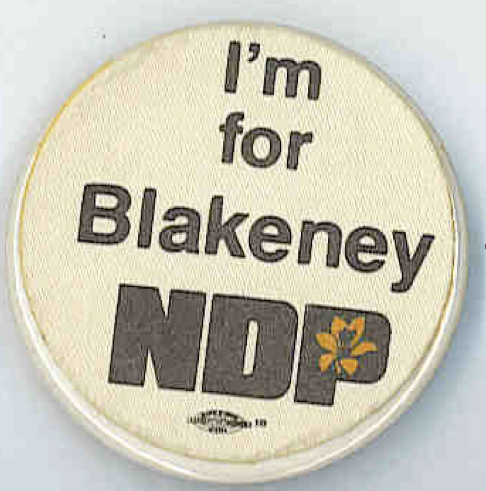
The Waffle
The Waffle movement threatened the establishment wing of the NDP. They formed a party-within-a-party. Lloyd was a waffle sympathizer. The movement emerged as a radical leftist anti-capitalist coalition. Blakeney was a pragmatic and firm establishment figure. There was internal party trickery with a great deal of tension between people. Eventually, a crucial meeting was called ostensibly about the Waffle but ultimately ended up calling for Lloyd’s removal from the leadership of the party. Blakeney did not defend Lloyd nor did he criticize him. Blakeney claims he had nothing to do with meeting’s objective although he was the presumptive heir to the party’s leadership.

Leadership & Blakeney
Blakeney announced his candidacy in April of 1969. His campaign would be unexciting and modest. Roy Romanow declared his candidacy in May at age 31. Romanow lied about his age claiming he was 34. He had the support of some heavy hitters in Regina. He was blamed for Lloyd’s removal. He was the right wing faction’s choice. He was photogenic, charismatic, inspiring + ready for TV. The two agreed not to attack each other during the campaign. Blakeney spoke like a Rhodes Scholar. He didn’t have many loyal supporters within the party. He was far more experienced however. His campaign called for a) uniting the party, b) defeating the anti-NDP factions. On the perennial issue of farming, Blakeney promised the Land Bank idea which was to buy land and lease it back to farmers. Romanow opposed this policy. The centre piece of the campaign was a series of town-hall meetings. The Waffle candidate imploded during the race. The convention saw a first ballot *R: 320 and B: 286 with George Taylor Waffle: 187. On the third ballot Blakeney gaining 100 votes, largely from the Waffle faction he didn’t upset as much as Romanow.

New Deal ‘71
Ross Thatcher called an election for June 23rd, 1971. Thatcher was a grandiose, bombastic public speaker fighting against “little Allan in wonderland”. Blakeney was not TV friendly so the NDP played up the team strategy. Allan conferred with teachers, trade unionists and native leaders who were alienated by Thatcher. The New Deal for People was 21 pages dealing with Agriculture, Values of Rural Life, Labour, Taxation, Resource etc & attacks on Liberal mismanagement and sell outs. There were over 100 promises in it. There were not costs or figures. As expected, Thatcher attacked it which Blakeney claims would move the NDP forward. Thatcher painted the campaign as another round in the battle between free enterprise versus socialism. It was a one man show with banners reading “Saskatchewan is Proud of Ross Thatcher.” His healthy was already weakening. Blakeney charges that Saskatchewan’s population had dropped since 1964 by 17,000 people. The NDP did not use poling but canvassers placing voters in the supporter, undecided and hostile categories. Blakeney tied Thatcher with the federal liberals famously stating “A Liberal is a Liberal is a Liberal.” Allan promised low interest loans to young farmers. The NDP attacked on selling out Saskatchewan resources to Americans on potash. On June 23rd, 1971, the NDP won 45 of 60 seats and grabbed 55 percent of the popular vote.
Premier Administrator
Blakeney was kind to his competition Romanow who became Deputy Minister. Having only 7 cabinet ministers, Blakeney places Romanow’s people in 4 of the 7 positions. Blakeney did not protect himself with a group of loyalists. He had to rebuild the machinery of government which Thatcher had allowed to decay. He hired civil servants that were not necessarily partisan like Douglas had. He did not give out as many patronage appointments as other wanted. He wanted a clear line between Deputy Ministers and Ministers: Ministers should delegate down to Deputy Ministers, not vice versa. He demanded that everything be on paper, proposals, and issues. He also required that solutions be presented for any present problem immediately. He detested the word “hopefully”. Blakeney’s cross-examination was a staccato, icy analysis. He liked people with cynical senses of humour. He instead ministers leave their departmental hats at the door: ministers should consider the needs of the whole government. He worked on the basis of consensus. Blakeney looked to ministers for the specific skills they brought to the table; he was not interested in partisanship within caucus. Blakeney’s favorite phrase in government was “Well, what do you recommend?” Ministers should test out ideas on the public, explain policy to the public. The emphasis on central planning cause the agrarianism of the earlier CCF to wane under Blakeney. Douglas had manic energy while Blakeney was calm, emotionless and well organized. Whenever he gave a speech he wanted to know a) was the speech for the audience, b) an interest group, c) aimed at the entire electorate. You needed to give Blakeney three weeks notice before a meeting where as Douglas required 30 seconds. Blakeney required time to stop and think and built it into his schedule. His aides were told that they could not engage in small talk with the Premier during trips and he would initiate the conversation. He rarely complemented others on good work. Blakeney had high expectation for his staff, professionalism was crucial. Working in his office was not pleasant. Blakeney rarely went out in public because he knew he would have to talk to people in the streets. His wife was a single parent during his years in office. Blakeney believe that the Premier would be isolated as part of the job. “The more senior your political office, the fewer friends you have.” Blakeney got along better with some ministers but he did not want to be accused of playing favorites. Douglas and Blakeney both recognized that “friendship cannot always survive politics.”
Premier Politician
Blakeney is a shy man. He doesn’t like campaigning. He is far more engaged with administration and policy. He is not interested in organizing a candidate slate or campaign strategy. He was very precise with people. He did not appreciate sycophantic staff. He listened to what people were saying not what they were conveying: he dissected conversations. Blakeney had trouble remembering faces. Blakeney used to talk to himself publicly. Blakeney did not appreciate the anti-native sentiment growing in rural and urban Saskatchewan. Blakeney knew that he needed to expand the NDP tent in Saskatchewan. He delegated internal party organizing and campaign planning to others. Blakeney controlled the NDP conventions agenda tightly and manipulated panels and plenary session to come up with their policy ideas. The Waffle was being pushed out of the party in the early 1970s. The Federal NDP had removed Jim Laxer from wining the nomination. Blakeney never pushed them out but they were diminished until they no longer existed. Blakeney was a great administrator but not a great politician. He could move from issue to issue easily but never convey the message that effectively. He was not a populist leader and many unfairly compared him to Douglas.

The Farm & Allan Blakeney
Allan Blakeney has to assuage rural farmers in order to secure their support. During the 1971 campaign, he criticized the federal Liberal’s policy on farm subsidization. He was interested in protecting the small capitalist farmer against the interests of the Bay street bullies. The left wing of the NDP wanted a Land Bank as an alternative to private ownership with long-term leases on publicly-owned land. In the New Deal for People it was on the table. In 1972, the Land Bank was created. By 1975, the commission had 600,000 acres of land, and it had 1,300 lessees. The suspicion of patronage frequently accompanied the distribution of land. Many farmers applied while only a handful received leases. This angered many rural supporters. The Land Bank was also undermined by farming prosperity in the mid-1970s. The program was perceived as a socialist program where farmers were mere tenants to government and not a transfer system. Blakeney attempted to improve the quality of transportation and rural infrastructure. Saskatchewan farmers have made the CCF a government and yet they opposed the Land Bank program. Blakeney was not able to revitalize the farming communities of Saskatchewan and the NDP became an exceedingly urban party.
The North
Half of Saskatchewan is forest and lake. This northern half is largely populated by First Nations (formerly referred to as Indians). By the 1950 and 60s, the life expectancy of aboriginals had risen as well as their population. They way of life was changing, there wasn’t much they or government could do about it. Thatcher, Lloyd and Douglas all believed in integration for native peoples in order to share the wealth and prosperity of all Saskatchewanians. By the 1970s, Métis and aboriginal nationalism was emerging. Blakeney helped establish aboriginal programs to support social services. Blakeney wanted the southern rural model of governance in one department for the north. The Department of Natural Resources would lose some turf. Young academics were brought into to administer the new department. They had little faith in aboriginal people. Blakeney’s relationship with Métis leader Jim Sinclair was touchy. The aboriginals in Fort Qu’Appelle had been pushed off their land and into welfare, but Sinclair felt there was hope in the north. Blakeney’s government accused Sinclair of stealing from the Métis Society for a vacation to Mexico. The Métis Society had a deficit well over their annual budget. Sinclair blamed the government when he refused to hold a general meeting for the Métis Society. Sinclair threatened violence. Blakeney had an easier time with the First Nations. Their relationship was one of “treaty-trust relationship.” The NDP was prepared to respect the treaty rights BUT since the Métis had not treaty rights, the NDP were not willing to give them special rights because this conflicted with the socialist-egalitarian philosophies. Blakeney’s government hardly dealt with the problems of First Nations in cities.
New Deal ‘75
The economy was doing very well in 1974-75. New growth was occurring with the price of commodities rising in wheat and oil. Secondary industry was not moving fast enough and the 71 promise of nationalization had not occurred. Several factories that were supposed to be built in Saskatchewan didn’t get off the drawing board during this period. Many civil servants moved into elected politics for the NDP. The opposition changed from Liberal to Conservative dominance. Bill 42, which would tax oil companies, the Land Bank program as a communist project was points of attack for both the Liberals and Conservatives. Blakeney campaigned on anti-Liberal government of Ottawa, improving rural life, diversification of the economy. The Liberals fought a hard-nosed, fear-mongering campaign. The NDP fought hard but lost six seats, three belonging to cabinet ministers and dropped 15 percentage points compared to 1971. His opposition was split. Blakeney figured that he should slow the introduction of policies and that Pierre Trudeau’s lack of popularity made him a perfect target for Blakeney.

Potash in Saskatchewan
In the early 70s, the NDP engaged in prorationing Potash setting its price artificially high. Prorationing meant that they had limited quotas which were far below demand in order to ‘preserve the resource’. The Central Canada Potash Company was owned by a Canadian and Chicago company 50/50. Blakeney wanted a cafeteria of options when delving with the Potash issue: a) partial public ownership with private investors or….John Turner in 1974 ended the provincial royalties for all resources as tax deductions. The feds wanted more revenue from resources. Blakeney went to court over the tax change. In the election in June 1975, Blakeney called for a New Deal for People with sped up participation in resource industries. The NDP were re-elected with a reduced majority. During the fall of 1975, Blakeney began the secret construction of an operations room in the basement of the legislature. It would serve as the brain-centre for the new secret PCS. Blakeney lost his court case against the Federal government. The 11 potash companies refused to pay royalties and sought legal declarations against the unconstitutional provincial reserve tax. Blakeney was under attack from the Federal government and the potash companies: if it was publicly owned then those attacks could be repulsed. Cadbury went to London to study how a takeover would affect markets. Romanow drafted the legislation careful to avoid offending the BNA Act and the US law. Caucus debated the issue for 4 months. The NDP had developed distrust for the media and circled the wagons after Blakeney’s throne speech. Blakeney made strategic phone calls before the throne speech to let Alberta premier Lougheed and Otto Land know the situation. The Star Phoenix said the creation of a new crown was a sign of the ‘sad stat of affairs’. Unions were unenthusiastic about rallying behind the premier on Potash. Liberals ran a filibuster in 1976 to prevent the legislation from passing. Caucus meetings detailed regular reports on Potash. The US was prepared to retaliate against nationalization: they had done so in Chile. Blakeney went to New York to deal with disgruntled financiers. He assuaged them. PCS purchased mine after mine. The US companies were being paid fairly for their potash investments. Alberta and Saskatchewan wanted to strengthen their influence in confederation with the constitutional repatriation. Resource wealth was a major concern for Blakeney. Potash was the economic equivalent of healthcare. Healthcare was to the 60s, as Potash was to the 70s for the NDP.

Uranium in Saskatchewan
The CCF had a longstanding social cleavage of supporters against nuclear-proliferation. Uranium was discovered in Saskatchewan’s north in 1935. Uranium went bust once the US stockpile was exceeding in 1959. It was largely military demand but Blakeney didn’t see Saskatchewan as participating in nuclear war; rather he believed international law was the problem not mining for uranium. A uranium refinery was built in the 1970s near Warman. Peter Prebble was an anti-nuclear participating at the UN summit on the aggressive expansion of nuclear power technology. Blakeney shuffled cabinet when there was disagreement there was questions over the environmental impact of Amok’s Cluff Lake project. Blakeney avoided a moratorium on the issue but promised an inquiry. There was a leak at Cluff Lake. The CCF was created to create institutional protection for farmers against the 19th century capitalism of banks railroads and grain merchants. Blakeney was never compelled by this philosophy. Blakeney and the middle generation were keen while the Prebble generation was staunch environmentalists. While an inquiry net on the pieces fell to place. Blakeney promise 3 billion in revenue and royalties. In 1978 uranium was not an election issue and Blakeney won a majority. Church religious groups opposed nuclear refineries in Warman. Blakeney asked how it was moral to deprive the world of new energy when it was in short supply. The uranium debate was an annual ritual at the NDP conventions throughout this period. Prebble was anti-nuclear and angered Blakeney at the NDP federal convention where the pro-nuclear faction was crushed in policy discussions.
The New Politics
Blakeney was a maverick, The Arab of Potash and indefatigable. Blakeney didn’t believe in Made-in-Canada (Ottawa) oil prices. The Tories were emerging once again with business donations. Blakeney was on vacation in 1978 when Trudeau declared he would wait until 1979 for an election. The polls were Tory Blue. Blakeney had to go in 1978 for fear of a tidal was of blue support. The Liberals had collapsed in 1975. Collver had leadership issues. He had a Swiss bank account. Knight learned negative campaigning for the US. It was an all out negative campaign calling Collver the “Nixon of the Prairies”. The Toronto Star called Blakeney Canada’s best premier. Blakeney ran against Trudeau on resource and Collver on trust. The NDP won 48 percent of the vote in 1978. In an incident in Regina, a very bitter Collver congratulated Wes Robbins on winning the campaign. On the steps of the legislature, Collver insulted Robbins’ mother and Robbins – a mild-mannered man – delivered a haymaker, sending the Tory leader tumbling down the steps. Collver resigned as leader of the Tories and stood as an independent advocating Canadian annexation into the US. He then moved to Arizona. The NDP did extensive polling during the election. The NDP farm vote was seriously dying by this point. The Crow Rate was a major policy issue he would forward later.
Economic and Social Policy
In 1978, Saskatchewan had the lowest unemployment in Canada at 5% below the national average. Blakeney did not make the mistake of the previous CCF governments by trying to create industry. Resources were Blakeney’s focus. He did not use the Crowns to change the management/worker relationship. They did not attempt to implement democratization in the workplace. Crowns were profit-makers. In 71, Blakeney removed the deterrent fee that Thatcher implemented on healthcare. The poverty gap was very large however. Particularly as First Nations immigrate to cities. The NDP implemented affirmative action policies but they backfired as Natives felt that whites resented the policy. The Affirmative action programs began in April of 1980. They would cause the NDP to lose the subsequent election. Women were dramatically under-represented in the CCF cabinet although they campaigned. There was no female candidate in 1978. The NDP did not have female representation and a vicious cycle emerged. There were calls for universal day care. 80 percent of families were headed by women in 1980. They implemented a career opportunities program in the civil service at the time. A voluntary program to encourage women into middle-management positions occurred. At the height of his power, Blakeney failed to truly deal with First Nations and Women’s issues until his 3rd term.

Alan Blakeney & the Constitution
Amending the BNA Act was a pain for Canada. Repatriation, however, would open the door to new questions about the legal structures that define confederation. The 1980 Referendum pushed Trudeau into a corner. Blakeney remained on the sidelines when Trudeau unilaterally presented amendments to British Parliament while the Gang of Six drew their daggers. Blakeney and Romanow worked as a good team despite the tension between them both. Blakeney didn’t believe that rights were protected by a constitution but by the conventions of British parliamentary democracy. A full analysis based on Christopher Manfredi’s classes. He believed that the US constitution had been misused; conversely they had been used for progressive ideals that Blakeney wouldn’t oppose. He opposed language protections, resources were the key for Blakeney. Romanow and Blakeney made a concerted effort to distance themselves from Ed Broadbent. For bargaining purposes, Broadbent could not ‘represent” Saskatchewan; he was an Ontario man with Ontario’s interests at heart. The NDP Federal wing was isolated and was not contacted under any circumstances about sensitive matter during the negotiations. While on vacation in Hawaii, Blakeney demanded written documents that he would sign negotiations of Trudeau’s constitution there. This was all very secretive. Romanow rushed down to Hawaii in order to discuss the implications of the deal: he was wore a winter coat to Hawaii. Meanwhile, the unilateral repatriation by Trudeau was challenged in court finding along the Blakeney lines that it violated Canadian convention BUT was not illegal. This set the stage for the November discussions in 1981. Romanow wanted a deal to be cut with Ottawa. A referendum on the constitution was denied by the premiers including Blakeney. Romanow conceded the constitutional veto of the provinces while Ottawa scaled back the Charter. There was a lot of maneuvering. After the gang of 8 agreed, the Charter was made law. Claude Morin was so angry with Romanow that they still never speak. But Levesque and the PQ wouldn’t have agreed on anything anyway in Romanow’s summation. Blakeney was solidly in support of the signed treaty rights of First Nations in Saskatchewan. He saw ‘self-government’ in terms of municipal models. Blakeney didn’t like the wording “aboriginal rights” because it was too broad and poorly defined. Aboriginals did not have the organizing
Defeat
In the early 1980s, the budgets were balanced, unemployment rate was low, and the province’s international credit was excellent. While Woodrow Lloyd believed that “government was the most effective method of implementing the will of the people” the NDP had a high-service administration that was very complex. The Western World was moving towards conservatives: Reagan & Thatcherism. Trudeau’s massive debt was problematic. The people of Saskatchewan were getting fed up with the NDP style government. Romanow was talking about how Saskatchewan ‘dared to be different’. The NDP needed a cause or two. Polls showed that the NDP were doing too much for the First Nations. Aboriginal issues were becoming front and centre. High inflation was at 12.5%. The Feds hiked up the prime interest rate were at a ruinous 22.75%, load rates were incredibly high. Blakeney blamed Ottawa but didn’t intervene. Finance Minister Ed Tchorzewski tabled a balanced budget with not tax increases. Hospital workers went on strike but Blakeney swiftly passed legislation banning any strikes during an election. In 1982, the game was a foot. Devine’s Conservatives promised 1) the removal of gas tax and 2) a mortgage protection plan which was far more lavish than that of the NDP. Devine promised that the sons and daughters of Saskatchewan would be invited back under a Tory government. Blakeney got into a confrontation with a CUPE supporter and he shoved a microphone out of the way on the first week. The media reported on Blakeney’s temperament. Blakeney said the price tag was too high on Tory promises. The Tory’s were talking about ‘becoming so much more.’ By week 3, the NDP were desperate calling Devine: Mr. Incredible and Dr. Invisible having not won his seat in Estevan. Blakeney found a great agricultural issue in 1982; the Crow Rate adjustments by Pepin in Ottawa which would kill thousands of kilometers of railway. This endangered a way of life and many small towns. The problem with the Crow rate issue was that Devine agreed also to fight to keep the crow rate as well. Devine spoke with the conviction of an evangelist. The Conservatives won with 55 of the 64 seats. Roy Romanow lost his seat by 13% to a university student. Everyone was in shock at the monumental defeat. The NDP had clearly misread the polls. Blakeney and the NDP had failed the political challenge of their time. Blakeney did not complain or whine or talk much about the defeat. Blakeney did not miss the public events but he missed administrating policy.
power of women and Blakeney accused these women of being selfish over Section 28. Blakeney regretted that Quebec had been isolated but believed he and the others had worked to get most of that province’s demands into the constitution.
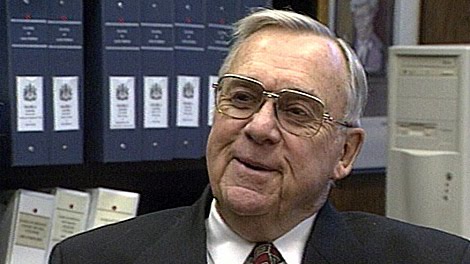
….Aftermath
The Tories kept their promises which were reckless. The deficit was 230 million in 1982 and 379 million in 1984. Devine cut spending on affirmative action programs, closed the Land Bank program, the Department of Northern Saskatchewan was disband, labour legislation was rewritten to favour employers. Devine sold the Department of Highway’s construction equipment to private firms. North Battleford gained a bacon processing and curing plant. Blakeney was opposition leader but his colleagues were not all former cabinet ministers and had grudges against him. In the 1986 election, Devine claimed that Blakeney had added wrinkles but no new ideas and that Devine was the heir to the Tommy Douglas vision (after Douglas had passed away in February of 1986). The final result vote count was very close with the NDP gaining the popular vote. Devine’s second term was massively destructive to the Saskatchewan treasury, as well as the conservative movement in Saskatchewan. Blakeney remained active during the 1990s. In 1992, he was made an Officer of the Order of Canada. In 2000, he was awarded the Saskatchewan Order of Merit. In 2001, he was made a Fellow of the Royal Society of Canada. Blakeney was also a past president of the Canadian Civil Liberties Association. Allan Blakeney passed away on April 16th, 2011
Based on: Promises to Keep

